From the Trenches
The Human Mosaic
By ZACH ZORICH
Monday, June 10, 2013
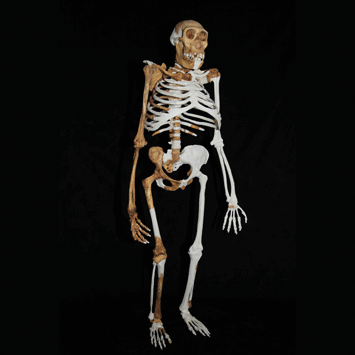 The most recent analysis of the 1.98-million-year old bones of Australopithecus sediba is showing that the hominins living in Africa at that time were a more diverse bunch than anyone expected. The study focused on two almost complete skeletons and one isolated tibia that were discovered in 2008 at the site of Malapa in South Africa.
The most recent analysis of the 1.98-million-year old bones of Australopithecus sediba is showing that the hominins living in Africa at that time were a more diverse bunch than anyone expected. The study focused on two almost complete skeletons and one isolated tibia that were discovered in 2008 at the site of Malapa in South Africa.
A research team led by Lee Berger of the University of the Witwatersrand describes the A. sediba fossils as being a mosaic of human- and apelike traits. Their arms are relatively long and their hands had curved fingers—both traits that suggest A. sediba spent a substantial amount of time in the trees. In addition, they had small brains, much closer in size to those of earlier species of Australopithecus than to those of the earliest members of the genus Homo. At the same time, A. sediba’s pelvis, teeth, and lower jaw appear to be humanlike.
Analysis of A. sediba’s lower limbs revealed that they walked upright, though differently from other hominins. Each A. sediba footfall landed on the outside of the heel and rolled toward the arch and big toe, causing the legs to rotate slightly inward. This gait may have evolved as a compromise that allowed A. sediba to walk on the ground and still climb trees effectively. The finding shows that at least two different forms of bipedalism had evolved in parallel about 2 million years ago, when the earliest members of the human genus Homo came along. “If you look at the three transitional species between the australopiths and Homo erectus—H. habilis, H. rudolfensis, and A. sediba—they all have primitive characteristics, and they all have Homo-like derived characteristics, but each has a different mix,” says team member Steven Churchill of Duke University. Churchill believes it is possible that these three species interbred and their offspring were the ancestors of modern humans. “Maybe all of the humanlike features coalesce in H. erectus,” he says.
Whale-Barnacle Barbecue
By SAMIR PATEL
Monday, June 10, 2013
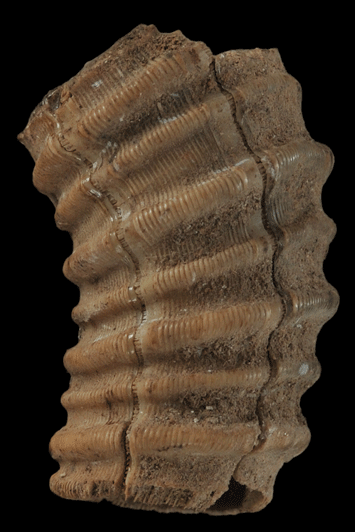 Remains of small crustaceans in the residue of a 14,000-year-old campfire suggest that the Upper Paleolithic people of Malaga, Spain, had much larger animals on the menu. Researchers from the University of Valencia identified the remains of two species of barnacles that live only on whale skin. The finds suggest that people of the Magdalenian culture consumed whale meat, though there’s no evidence they hunted this one—the marine mammal may have beached or been stranded by a low tide. Both species of barnacles are associated with whales that now live in the Southern (but not Northern) Atlantic, suggesting that lower sea temperatures during the last Ice Age altered the cetaceans’ range.
Remains of small crustaceans in the residue of a 14,000-year-old campfire suggest that the Upper Paleolithic people of Malaga, Spain, had much larger animals on the menu. Researchers from the University of Valencia identified the remains of two species of barnacles that live only on whale skin. The finds suggest that people of the Magdalenian culture consumed whale meat, though there’s no evidence they hunted this one—the marine mammal may have beached or been stranded by a low tide. Both species of barnacles are associated with whales that now live in the Southern (but not Northern) Atlantic, suggesting that lower sea temperatures during the last Ice Age altered the cetaceans’ range.
Portals to the Underworld
By ERIC A. POWELL
Monday, June 10, 2013
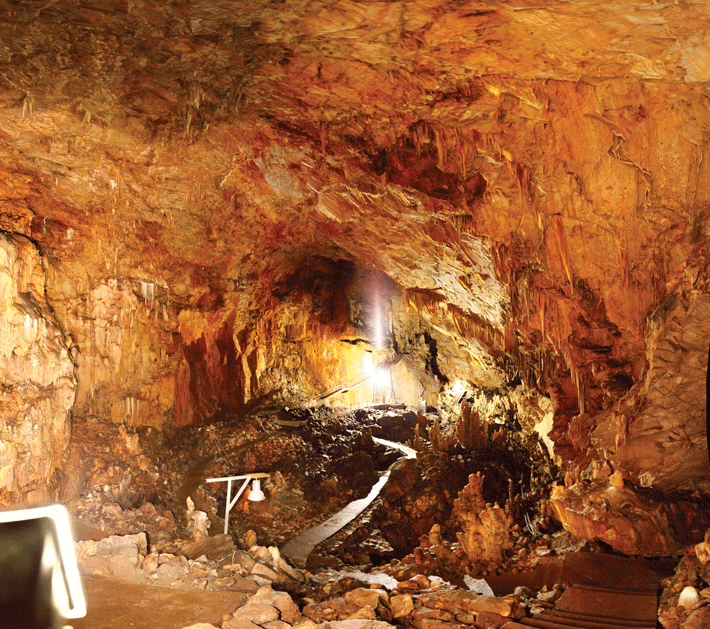 For the ancient Mesopotamians, hell was a distant place, across an ocean of death, located at the end of the world. But for the ancient Greeks and their Neolithic ancestors, the gates to the underworld were not that far away at all.
For the ancient Mesopotamians, hell was a distant place, across an ocean of death, located at the end of the world. But for the ancient Greeks and their Neolithic ancestors, the gates to the underworld were not that far away at all.
Earlier this year, University of Salento archaeologists announced the discovery of one such portal at the Greco-Roman city of Hierapolis in southwestern Turkey. The team located a cave at the site that emits poisonous gases and was thought in antiquity to be an entrance to Hades. Known as “Pluto’s Gates,” for the god of the underworld, the cave is near a temple where the archaeologists found a column bearing a dedication to the god and his wife Persephone.
Not far away, excavations at a cave at Alepotrypa in southern Greece (above) suggest that the Greek concept of the underworld, on display at Hierapolis, may have originated in the Neolithic period. The entrance to this cave collapsed 5,000 years ago, preserving evidence that Neolithic people lived there, and that others made pilgrimages there from afar to bury their dead. Millsaps College archaeologist Michael Galaty, who works at the site with a team led by Greek archaeologist Giorgos Papathanassopoulos, says his colleagues believe the site took on mythological significance. “Giorgos thinks that when the cave collapsed and everyone left, they took this cultural memory with them of an underground realm where they buried the dead,” says Galatay. “This could be the source of the Greek fascination with the underworld.”
Roman London Underground
By SAMIR S. PATEL
Monday, June 10, 2013
 In the heart of modern London, at the site of what is soon to be Bloomberg’s European headquarters, archaeologists from Museum of London Archaeology (MOLA) have revealed one of the city’s most impressive Roman sites. The excavation, next to where the Temple of Mithras was discovered in the 1950s, took six months to complete. Among the remains of timber buildings, fences, wells, and a complex drainage system, archaeologists uncovered some artifacts, dating from A.D. 47 to the fifth century. The remarkable preservation—particularly of organic materials such as wood, leather, and basketry—is due to the site’s location in the valley of Walbrook River, one of London’s lost watercourses. The finds “will transform our understanding of the people of Roman London,” says MOLA’s Sophie Jackson.
In the heart of modern London, at the site of what is soon to be Bloomberg’s European headquarters, archaeologists from Museum of London Archaeology (MOLA) have revealed one of the city’s most impressive Roman sites. The excavation, next to where the Temple of Mithras was discovered in the 1950s, took six months to complete. Among the remains of timber buildings, fences, wells, and a complex drainage system, archaeologists uncovered some artifacts, dating from A.D. 47 to the fifth century. The remarkable preservation—particularly of organic materials such as wood, leather, and basketry—is due to the site’s location in the valley of Walbrook River, one of London’s lost watercourses. The finds “will transform our understanding of the people of Roman London,” says MOLA’s Sophie Jackson.
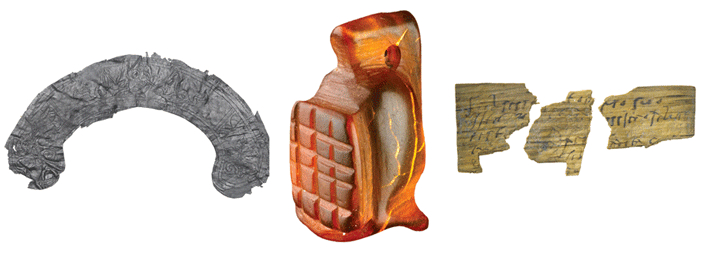
In Style in the Stone Age
By ERIC A. POWELL
Monday, June 10, 2013
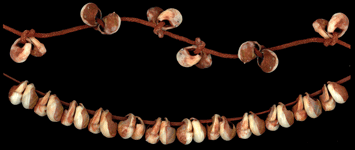 Even Paleolithic people knew that while fashions fade, style is eternal. A team led by University of Bordeaux archaeologist Marian Vanhaeren found that beaded necklace patterns changed in a relatively short time around 75,000 years ago, possibly within a few generations.
Even Paleolithic people knew that while fashions fade, style is eternal. A team led by University of Bordeaux archaeologist Marian Vanhaeren found that beaded necklace patterns changed in a relatively short time around 75,000 years ago, possibly within a few generations.
Vanhaeren and her colleagues analyzed shell beads from Blombos Cave, South Africa. Beads from two separate layers displayed patterns of wear distinct from one another, which suggested that they had been strung and worn differently at different times. The archaeologists made some beads of their own and strung them in a variety of styles. They then subjected them to use, and exposed them to a water-and-vinegar solution meant to mimic human sweat and accentuate the marks that came from everyday wear. “Voilà,” says Vanhaeren, “we had the wear patterns.” From the experiment, she concluded that in the older layers, shells hung freely on a string (above), while in the upper layers the shells were knotted together in a more complex pattern (top). Vanhaeren notes that the beads in both layers probably came from numerous necklaces. “All the people respected the rules and wore the beads in these specific patterns,” she says. In other words, the Blombos Cave people were slaves to fashion.
Advertisement
Advertisement
IN THIS ISSUE
From the Trenches
Not Quite Ancient
Off the Grid
Chilling Discovery at Jamestown
Origins of the Maya
Seeds of Europe's Family Tree
France’s Wealthy Warriors
Did the “Father of History” Get It Wrong?
Apollo Returns from the Abyss
Afterlife of a Dignitary
Spain's Lead-Lined Lakes
In Style in the Stone Age
Portals to the Underworld
Roman London Underground
Whale-Barnacle Barbecue
The Human Mosaic
Advertisement

Recent Issues
-
 May/June 2024
May/June 2024
-
 March/April 2024
March/April 2024
-
 January/February 2024
January/February 2024
-
 November/December 2023
November/December 2023
-
 September/October 2023
September/October 2023
-
 July/August 2023
July/August 2023
-
 May/June 2023
May/June 2023
-
 March/April 2023
March/April 2023
-
 January/February 2023
January/February 2023
-
 November/December 2022
November/December 2022
-
 September/October 2022
September/October 2022
-
 July/August 2022
July/August 2022
-
 May/June 2022
May/June 2022
-
 March/April 2022
March/April 2022
-
 January/February 2022
January/February 2022
-
 November/December 2021
November/December 2021
-
 September/October 2021
September/October 2021
-
 July/August 2021
July/August 2021
-
 May/June 2021
May/June 2021
-
 March/April 2021
March/April 2021
-
 January/February 2021
January/February 2021
-
 November/December 2020
November/December 2020
-
 September/October 2020
September/October 2020
-
 July/August 2020
July/August 2020
-
 May/June 2020
May/June 2020
-
 March/April 2020
March/April 2020
-
 January/February 2020
January/February 2020
-
 November/December 2019
November/December 2019
-
 September/October 2019
September/October 2019
-
 July/August 2019
July/August 2019
-
 May/June 2019
May/June 2019
-
 March/April 2019
March/April 2019
-
 January/February 2019
January/February 2019
-
 November/December 2018
November/December 2018
-
 September/October 2018
September/October 2018
-
 July/August 2018
July/August 2018
-
 May/June 2018
May/June 2018
-
 March/April 2018
March/April 2018
-
 January/February 2018
January/February 2018
-
 November/December 2017
November/December 2017
-
 September/October 2017
September/October 2017
-
 July/August 2017
July/August 2017
-
 May/June 2017
May/June 2017
-
 March/April 2017
March/April 2017
-
 January/February 2017
January/February 2017
-
 November/December 2016
November/December 2016
-
 September/October 2016
September/October 2016
-
 July/August 2016
July/August 2016
-
 May/June 2016
May/June 2016
-
 March/April 2016
March/April 2016
-
 January/February 2016
January/February 2016
-
 November/December 2015
November/December 2015
-
 September/October 2015
September/October 2015
-
 July/August 2015
July/August 2015
-
 May/June 2015
May/June 2015
-
 March/April 2015
March/April 2015
-
 January/February 2015
January/February 2015
-
 November/December 2014
November/December 2014
-
 September/October 2014
September/October 2014
-
 July/August 2014
July/August 2014
-
 May/June 2014
May/June 2014
-
 March/April 2014
March/April 2014
-
 January/February 2014
January/February 2014
-
 November/December 2013
November/December 2013
-
 September/October 2013
September/October 2013
-
 July/August 2013
July/August 2013
-
 May/June 2013
May/June 2013
-
 March/April 2013
March/April 2013
-
 January/February 2013
January/February 2013
-
 November/December 2012
November/December 2012
-
 September/October 2012
September/October 2012
-
 July/August 2012
July/August 2012
-
 May/June 2012
May/June 2012
-
 March/April 2012
March/April 2012
-
 January/February 2012
January/February 2012
-
 November/December 2011
November/December 2011
-
 September/October 2011
September/October 2011
-
 July/August 2011
July/August 2011
-
 May/June 2011
May/June 2011
-
 March/April 2011
March/April 2011
-
 January/February 2011
January/February 2011
Advertisement






